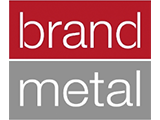The CBRM has a property tax problem for both homes and businesses. They are way too high. But the entire province of Nova Scotia has a broken tax cap system for homes that grows increasingly more problematic over time. While home sales counteract the distortion, a lower volume of home sales in Cape Breton limits the effectiveness.
That tax cap problem is particularly bad in the CBRM because of our high taxes and minimal growth in our tax base.
I have a dynamic recommendation on how to fix it. But first just a quick primer on the tax cap and its issues. If you already understand the tax cap, you can jump ahead and get to the brainstorming.
What is the tax cap?
It started out as a system to help prevent homeowners from paying too much property tax when their homes increased in value quickly.
A year after you build or purchase your home, the tax cap is applied for you automatically.
This means that no matter how much your home increases in value, your tax assessment will only grow by up to the rate of provincial inflation each year.
Inflation is just a measure of increasing prices on all the things we buy, estimated by the Consumer Price Index.
What is the catch?
As the value of homes rise, the cap prevents the municipal government from taxing them at their full market value. This reduces the amount of tax revenue that they collect, and they need this to run the municipality.
If they are not collecting enough tax revenue, they have to increase the rates or cut their spending to accommodate a contracting budget. So despite the cap being in place, all homeowners end up paying a higher tax rate at some point.
That’s the current condition in the CBRM. For some, it becomes unaffordable, and they run a tax debt or lose their home to a tax sale.
For businesses, even though they have no tax cap on commercial properties, the lack of ability for homeowners to raise sufficient tax revenues puts pressure on the commercial property tax rate to rise as well. And that becomes a disincentive for some businesses to start here, especially small businesses with high startup costs and limited operating cash reserves.
What’s an even bigger catch?
While people who have the cap on for many years may feel like they are benefitting, people who buy or build a new home don’t have the cap. They start out paying taxes on the full market value of their home.
Even though their home may be worth the same as their neighbours' homes, they’ll pay more taxes than neighbours who are under the tax cap.
But everyone, including those capped and uncapped, are all paying tax rates that are higher than they should be because of the flaws in the system.
How does it affect the housing market?
Breaking the cap by selling your home and buying or building a new one can be very costly. People who have had the cap in place for many years may be saving a considerable amount of money in taxes by keeping it in place. They lose that advantage if they sell and move to a new home they buy or build. So they often may avoid doing so.
For those that don't understand the cap, it may come as an unwelcome and costly surprise later. In my experience, real estate agents don’t make a vigorous effort to explain what to expect when the tax cap comes off.
Homeowners that have had the cap in place from the very beginning will certainly be reluctant to invest in a new home if they are aware of the tax cap factor. Seniors who are ready to downsize their homes may be discouraged from doing so. It would cost them a lot to break the tax cap.
Since the tax cap limits the size of the tax base for municipalities to collect taxes, they have to increase the percentage of tax charged over the long-term. In the CBRM, that percentage is high enough that it becomes a deterrent to home ownership. It also means that some buyers will have to purchase cheaper houses to compensate for the high taxes they’ll need to pay. Their income not only has to support the mortgage costs, but also the average monthly component that goes to their tax bill.
Even for those who can afford it, it is an unfair rate. They could just as easily save, invest, or spend that money on their family’s needs or wants.
So why don’t we just eliminate it cold turkey?
Very few politicians would ever consider just eliminating it immediately. The few that would do so would likely be bad ones - i.e. those who don’t understand the effects of the system very well, and the potential for adverse side effects.
Although removing the cap cold turkey would quickly create a situation where people that are paying too much in tax right now would see a reduction, it would be a very painful increase for those who have held the tax cap for a long time. They would be angry.
In the case of people who are just getting by or have very little additional monthly income to spare, a sudden increase could be financially constraining.
So that’s why politicians have taken to the idea of removing the cap over the course of about 7 years. It’s a slow method of removing the cap with less shock to the system for those who would have a difficult time affording a sudden increase.
Is phasing out the tax cap the right idea?
Well, it’s simplistic and easy for politicians to understand. But there’s no indication that they’ve given any thought as to whether or not there might be other methods that would have better results.
What is a better result?
The basics of a “better result” are (i) having homes start to be taxed at their true market value, (ii) having tax rates drop, while also (iii) accelerating the growth of the tax base.
To increase the tax base, we need more homes built, existing homes increased in value by improvement and a boosted real estate market that pushes up the true market value.
However, how to specifically define a better result, should be as subject to reinterpretation as how to remove the cap - or whether to actually remove the cap at all. There may be different ways to define it and abstract notions of “fair” aren’t specific enough.
Who would be better at solving this than politicians?
Property Valuation Services representatives presented to the CBRM Council. The Council, overall, lacks sophistication. Veteran councillors are more well-versed in status quo politics and what we can’t do, versus what we can do. As a consequence, you’ll see a bias toward them embracing ideas that are the easiest to understand.
When the PVSC reps presented to Council, there was one big caveat. Although the presenter was considered an expert when he described a phased out method of removing the tax cap, he was asked what the result was… and he didn’t know.
See the full article for the video above.
What this demonstrates is that prior to this presentation, there clearly wasn’t a great deal of research on how a phased out tax cap removal actually affects people. And that’s alarming when the scope of its impact is considered: every homeowner in the province, millions of dollars, and direct impact on the sustainability of all tax-collecting municipalities.
There is a possible group that may be better at offering solutions and analysis to the tax cap removal challenge. And those are the students of Nova Scotia's universities. Students by nature of the inexperience of youth and proactive academic focus in their discipline are less constrained by what we’ve traditionally done, or what we’ve traditionally considered as off the table.
What would a student team taking on the tax cap challenge look like?
A typical student team might have a cross-disciplinary composition. Senior students in Finance, Public Policy, Sociology, Engineering, and Computer Science would bring a complementary skill set to the challenge.
Together they would have the capability to create tax cap removal or adjustment strategies, model them, crunch the data, analyze the findings, and evaluate the impact on municipalities and the various demographic segments that live within them. But the impact wouldn’t necessarily only be limited to the financial component.
Why would the students get involved?
Weak students with uninspired professors wouldn't get involved. The best students and professors would understand the value. Assign a nominal $5,000 bounty for the winning team. The real value is in the resume builder for all students who undertake to solve a problem that has a major impact on society and our provincial economy, or any other province with a similar tax cap in place. Post graduation, it’s important for students to have experiences that extend beyond passing exams. Those that do will be much more successful in entering the job market.
What do they need to get started?
They need a municipality and an academic facilitator who will defy their own limitations and set this into motion without commissioning a feasibility study. If you read that as sarcasm, you’re reading it correctly.
The facilitating municipality should be the CBRM, spearheaded by a Council sub-committee. And the academic facilitator should be Dingwall-lead CBU through the Versheren Centre.
Either the university or the municipality can contribute the $5,000 prize. If not, the prize can be sponsored with a few phone calls.
The basic ingredient the students need is data. Property Valuation Services maintains data about the entire inventory of homes in the province and their historical tax assessments. Viewpoint.ca also maintains this data.
This data, in anonymized format, can be made available for download in multiple formats. And it empowers the student teams to develop models of their proposed tax cap changes, and then test them against this data to predict the result of using their methods over a multiple year period.
However, students are free to collect and mine whatever data they need. Their capabilities shouldn't be limited.
How long do they get to work on the problem?
Give them 60 days. If properly managed by the facilitators, this will result in submissions from every university in the province.
The potential diversity of ideas and supporting data may unlock a better tax cap removal or adjustment strategy than the simple phased out process that is often talked about, but not progressed… likely due to the fear of public disapproval by current politicians, none of whom want to be the one to increase a person’s tax bill.
Is there really a better way than just phasing it out?
Keeping it simple is always a good idea in theory. But ease of implementation doesn’t assure that the results will be optimal, or good, or even non-damaging.
We have to understand how it affects specific segments of homeowners. Triggering an effect that would encourage more people to leave the province, or a region facing severe outmigration like the CBRM, would be self-defeating.
How does a sudden increase in residential tax impact seniors who have family hoping they’ll consider joining them in another part of the country they’ve migrated to with their families?
How much money does the increase in tax take out of the local economy where it would otherwise be spent (some of it at local businesses) and does that have a significant effect?
Is there a solution that not only corrects tax disparities among homeowners but also actually has a positive impact on consumer behaviour within the local economy?
Is the phase-out removal too slow to have an immediate impact on home construction or upgrade decisions?
Can tax cap status be tied to an incentive for improving the province, such as energy efficiency upgrades?
Should the tax cap be fully removed at all?
A limitation to acknowledge before we begin
One of the last things you want to do when entering a brainstorming session is start imposing too many limitations. That works against the unbound ideas expected from inviting students to work on these problems in the first place.
With that said, a key limitation to many strategies that involve changing the tax policy dynamically is provincial approval. Changes require approval via legislation, policy changes by controlling bureaucratic agencies, amendments to the MGA or municipal charters. And in the spirit of solution seeking, I’m going to assert that everything is subject to and can change. Discovering a better solution will help eradicate all of the red tape that gets in front of it. Right now, the current solution essentially has provincial leaders in a state of paralysis. They want credit for their supposed desire to come up with a solution, without actually moving it forward due to its inherent political risks. Who wants to mess with the senior voting demographic in an ageing province, right?
Now, with that said, let’s get on with it.
What are some examples of alternative tax cap removal strategies?
Alternatives will vary in difficulty of implementation, and actual results. However, in an act of brainstorming, the goal isn’t to dismantle each idea as they are constructed.
The goal is to capture them. Evaluation comes later. Some ideas won’t work. Some will require tweaking. Some will simply help to spark derivative ideas.
If you fancy yourself a creative person and are interested in this problem, here are some examples to get you thinking with less constraint.
To be non-repetitive, the general theme of these ideas will be reducing negative impact, correcting tax cap unfairness, increasing municipal tax revenues through tax base growth, decreasing the rate of tax arrears or default (tax sales), encouraging home building, avoiding pushing anyone out of the province or the CBRM, and attempting to encourage greater investment in the local economy.
These ideas could be used by themselves, but more likely in combination with other strategies. A part of the challenge is determining what would be a successful implementation with a mix of policies derived from these or similar ideas. Many of these ideas would make others redundant. They sometimes will contradict one another. They’ll often shift the goal post to another objective beyond just breaking the tax cap.
Seniors keep the cap
If we are worried about the impact of removing the cap on seniors, we let them keep the cap. To avoid abuse of the policy change by affluent seniors, we limit keeping the cap eligibility to new home construction, or home purchases for a value under $250,000. If their current cap status is a 20% discount of capped assessment value versus true market value, they reenter the cap on the new property with a 20% discount and continue with the cap. Alternatively, they just keep the cap gap instead, I.e. net benefit, or the difference between capped and market value assessment of the home they are selling.
Keep the cap on new construction
The best way to grow the tax base is via new construction. The economic activity creates jobs and boosts the economy. New construction incentives don’t necessarily lower home values since many homes in our local real estate inventory are below the cost of new construction and are more affordable to new homebuyers. One method would be allowing anyone that wants to build a new home to do so, while keeping their relative tax cap advantage for the new home. However, the tax cap would immediately begin phasing out over a 7-year period. This protects them from excessive tax rates on new construction while the phase-out gradually corrects that distortion each year.
50% cap on all new construction with phase-out
Incentivizing new construction is essential. If tax rates are approximately double what they should be compared with Halifax as our most successful municipality, a tax cap at 50% of market value would incentivize new construction by giving homeowners advantageous tax parity starting out. The cap would then be phased out, with phase-out expected to lower tax rates over time as the tax base grows and diminishes the average tax burden imposed on homeowners.
Mortgage holders keep the cap when buying or building a new home
Those who own their own homes have less of their income allocated to housing. They’ve worked hard and paid off their asset. However, they will have a greater ability to absorb increased tax costs than those still paying a mortgage. This would help new home buyers be able to afford a home that otherwise would be challenging due to modest levels of employment income or retirement income.
Buy the cap
When a home transfers ownership to a family member, the tax cap system already allows the new owners to keep the cap in place. This could be extended to allow any home sold to allow the buyer to buy or “keep” the cap in place. This overcomes the reluctance of buyers purchasing now, breaking the cap, and then getting forced to pay excessively high tax rates on full market value. This would be best integrated with a phased out tax cap policy, otherwise, it would seriously impact municipal tax revenues in a non-sustainable way. Alternatively, the policy could be buying 50% of the cap. This acknowledges that the distortion in tax rates created by the cap shifts the burden of excess tax fees to new homeowners.
Gift the cap
Many parents would love to be able to incentivize their children to stay in the CBRM and not move away (or to come home). They may not have the financial means to do so. Gifting the cap could be one scenario. Gifting the cap would allow homeowners to remove the cap fully from their existing home, and assign the advantage to their immediate children or grandchildren upon purchase or new construction. To avoid abuse of family members, this would require a review process and a financial means assessment to qualify.
Come Home To Build For a $0 Assessment Cap
Targeted at people who lived in the province before, the “Come Home to Build” program offers a capped property assessment of $0 on new construction regardless of the value of the home. It will begin phasing out over 7-years. Whether a $200,000 or a $500,000 home, in the first year, the new homeowner would pay $0 in taxes, since the capped assessment would be $0. By the 8th year of ownership, they would be paying tax on the full market value assessment.
Buy into a neighbourhood cap
To simplify, define a neighbourhood as a single street or road. When a new homeowner buys or builds in the neighbourhood, they start out with a cap in place that gives them the average tax cap level that all of their neighbours have in place. A neighbourhood with many homes all under the long-term cap would offer the new homeowner the greatest introductory tax cap incentive. However, it would also increase the value of the home on the market due to the savings. This challenges the often referenced distortion where neighbours having a home of the same value may be paying very different amounts of residential tax. However, it would require a phase-out of the tax cap concurrently.
Move to an average cap on home upgrade investment
Home upgrades increase the taxable value of a home and boost the local economy. The tax cap could be used to encourage this type of investment. An eligible home upgrade project of a minimum investment of perhaps $25,000, would make the homeowner eligible to move to a capped assessment that is the average of their neighbours (see above). This would require an application, limited to (1) municipal-controlled before & after inspection, and (2) review of construction contract costs to approve and avoid fraud. By obtaining a capped assessment, the reduction in taxes owing annually would help encourage these investments (offsetting the monthly financial burden of loans). Long-term, as the tax cap distortion corrects, these homes are now assessed higher and generate more tax revenue for the municipality. Short-term, it sparks more spending in the local economy supporting the trades industry and creating more homeowners among those employed in the industry.
Rapid tax cap phase out
Phase out strategies generally apply to everyone and phase out over 7 years. However, there are different categories of capped homeowners. They may be capped for just a few years, or they may be capped for as long as the capped program has been in place. Phasing out the tax cap has the greatest financial effect on those that have had it the longest. While they have received the greatest financial incentive, that doesn’t mean that they can suddenly afford to pay significantly higher annual taxes. We have to keep in mind that this is bad government policy that everyone participates in for obvious reasons, and is not the fault of the homeowners. With a rapid tax cap phase out, we recognize that those newly capped don’t need as long of a phase-out period. They are already paying too much in tax, therefore, the phase-out will have less impact. Phasing out their tax cap over a longer period than they’ve had it in place isn’t necessary. So this phase-out scenario varies the phase-out period to be either (i) the number of years the homeowner has been capped, or (ii) a maximum of 7 years. To be effective, the municipalities need to immediately invest the new tax revenues collected into lowering tax rates.
Rapid tax cap phase out for homeowners who will face manageable financial impact
If removing the cap will cause a manageable increase in annual taxes owing, there is less need to do a slow phase out over 7-years for these homeowners. This could vary depending on the true market value of the home. For instance, homes under $75,000, could have an adjustment that would require a tax cap correction of the greater of 1/7th of their expected tax payment increase based on the phase-out formula, or $300 a year). For homes under $150,000 in value, this could be $600 a year. For homes under $250,000 per year, this could be $900 year, etc. By accelerating the rate at which the tax cap can be affordably removed, the increases in municipal tax revenues allow for an annual reduction in tax rates that reflects the increase in revenues.
3-Year Phase Out For Above-Average Tax Cap Benefit
The amount of difference between capped tax assessment and actual market value varies among all homeowners. By taking the aggregate benefit (market value - capped assessment for all properties) and dividing by the number of homes, the average tax cap benefit is determined. All homeowners who have a tax cap benefit under the average will phase out over a 7-year period. Homeowners who have an above average benefit will phase out the benefit (up to the average) over 7-years. However, the additional benefit above the average will be phased out over 3-years. Those who have the largest benefit have typically received the largest cumulative tax savings over time. While their total payable housing tax will increase faster, the growth in the capped tax base will allow for tax rates to be lowered concurrently.
Introduce capped and uncapped tax rates with an opt-out
If we can set different tax rates for capped properties, we can increase them and draw more revenue from homeowners benefiting from the cap. We could then invest the new revenue into lowering tax rates for uncapped properties or new construction.
Then introduce new construction tax rates that lock in for 5 years. We could then set these rates low to encourage new construction.
Increased tax rates per year of cap
For each year a home has been capped, assess an additional 0.10% tax rate increase. This rate begins reclaiming the lost taxes from the capped assessment without accelerating the removal of the caps. So this is a variable tax rate to counteract the tax cap disparity, collecting more taxes from those with the largest advantage, to reduce pressure on the rest of homeowners.
Special Zero Tax Homes, New Construction Drive
A zero-tax property progresses towards a 0% residential tax rate over a period of 10-years. This is a short-term program designed to cause a large increase in new home construction in Cape Breton and appeal to retirees and other ex-patriots with a desire to come back to the island. Once announced, the program would be run for a period of three years before the window of eligibility closed. For an eligible new home builder (who will reside in the home as a primary residence), their first year of taxation will be a full tax rate on the full market value of the home. Let’s say that rate is 2%. Each year thereafter, their tax rate will drop by 0.20%. In the second year, they would pay 1.8%. In the tenth year, they would pay 0.20% only (a 90% reduction). In the 11th year of ownership, they would pay no residential taxes at all. If they sell the home, the tax rate for the new owner would revert to the current tax rate at that time. The incentive would be designed to drive new construction during a fixed period. The taxes paid in the early years would represent growth in the tax base and would help reduce the overall tax burden for everyone else. If done concurrently with a tax cap phase out, this new construction income and economic stimulation would help ease the burden of the increased taxes for those who had been benefiting most from the cap.
Looking at alternative solutions
It should be clear by now that there are many different ways (and combinations of ways) to look at both the problem and the solution. Some are complex. Some are straightforward. Some would have major market effects. Some would occur in a more controlled (slower) method over many years. Some focus on increasing the fairness of comparable tax rates for comparable home value, while others focus on rapid growth to the tax base to diminish the potential adverse effects of any type of tax cap phase out.
I continue to believe that government representatives and bureaucrats are among the least capable and the least motivated to come up with a solution. Likewise, I believe that the greatest range of dynamic solutions and unbound ideas will come from entrepreneurs, engineers, and students who aren’t afraid of thinking outside of the box, and are too smart to be limited by further red tape in the system that created this problem in the first place.
What are your ideas?
Post them in the comments.
NOTE: The views expressed above are my own and do not represent lokol (goCapeBreton.com). Read more






0
Log In or Sign Up to add a comment.- 1
arrow-eseek-eNo items to displayFacebook Comments